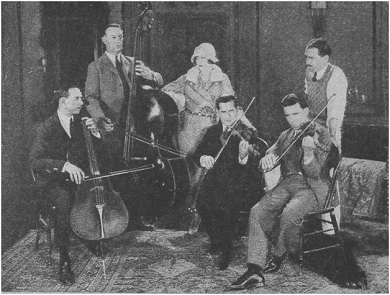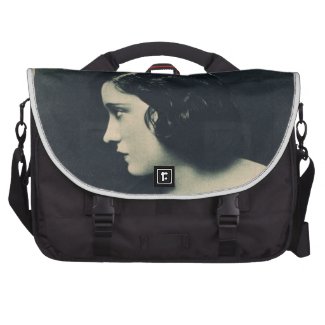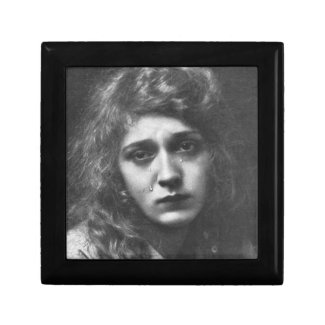Love Music, Music for All, Music in Strange Places ... Uh, No Music, Please
Off-camera music was used to elicit feelings of real emotion in silent film stars. It definitely wasn't always the feeling of sadness and the aim wasn't always to bring about tears.
 |
| Ben Lyon feels your pain |
A story is told of the actor Harry Carey who was supposed to make love on horseback. He was so stiff that the actress refused to capitulate to his wooing.
"How can I act when I can't hear the music?" Harry finally asked in desperation.
So to remedy this the musicians crawled into a large low-hanging branch of a tree just above the spot where Harry was staging the love scene.
They played Indian Love lyrics and suddenly Harry became so fiercely amorous that the heroine begged for mercy and the cameraman whooped for joy and they filmed the scene!
"Another time during the filming of a sorority party the only place where the musicians could be hears and still not be seen was in the bathtub. So in they climbed and ground off tones that were the liquid needed."
Do you have favorite songs that you play for different thing? Date music? Sad songs when you need a cry or special songs that you would play for a wedding or memorial service? Uplifting music, songs to that are happy and motivational when you exercise, work, create your art? Favorite holiday music, funny songs?
The leader of the Douglas Fairbanks Trio said that his favorite was a little Spanish song, Cieleto Lindos. He had them play it almost constantly while he was producing.
 |
| An emotional scene for George Baban |
Harry Langdon notes that a group of lions on his set responded. They were surly and stubborn doing nothing but growl and snarl but under the spell of a violin and piano became as docile as lambs. Mr. Langon said, the moral is, "Always carry a violin with you when hunting wild beasts."
"Langdon in his long vaudeville career learned to play every musical instrument in existence. In fact his hobby is collecting freak instruments and his dressing room is a potpourri of every kind of music-box, from musical saws to banjos made from cigar boxes and ukuleles manufactured from tin cans."
Just as music is effective in rousing both genders and all ages, it can bring out emotions in the crew. I read stories of carpenters and electricians who struggled to hide their tears and directors who had to stop work due to their inability to concentrate.
 |
| 1919 Child actress Olive Johnson |
Then child-actor Jackie Coogan liked Barney Google and a song written by his father, You'll Never know What a Good Fellow I've Been.
He starred with Charlie Chaplin in The Kid. Coogan, you'll recall went on to be a successful adult actor. He was in Million Dollar Legs with Betty Grable. He was also Uncle Fester on the popular 1960s TV show, The Addams Family.
The universal language
"In filming big mob scenes which employ a great number of foreigners, people of all nations who do not speak a common language, music is often the best interpreter.
"Certain scenes in The Ten Commandments were made by thousands of Hebrews who did not understand a word of English. But the director swayed them perfectly to his desires by the use of a twelve-piece orchestra which played their own Hebrew music - music which instilled in them the mood he wished them to interpret."
Layers: Actors as Musicians, Singers; Phonograph Records
When Gladys Cooper was Flora in Bonnie Prince Charlie the tears would not
 |
| Ivor Novello, Gladys Cooper 1922 The Bohemian Girl |
It was said that no screen star responded so readily to music as Mary Pickford. In The Little Princess there's a scene where she is told of her father's death in India.
Director, Marshall Neilan was an accomplished musician. He played piano himself as the scene progressed. "At Mary's entrance he played a little dance, a light tripping thing. Then Miss Minchin breaks the sad news -- bang! goes a discordant crash the first shock and then the strains of The Land of The Sky Blue Water, Cadman's Indian masterpiece for the registering of sorrow."
I'm going to compare with a look at music played in theaters for audiences during films. I don't think there was necessarily a correlation between what was played in the studio and played for people watching the film.
Wallace Reid played violin and his wife, Dorothy Davenport played piano.
Betty Compson was a professional violinist before she became an actress. When an extremely emotional scene was required Miss Compson often took the violin or the cello and played some of her pensive airs until the proper mood came over her.
Then she threw down the violin and went back before the lights and camera to shoot the scene. The musician who was accompanying her would continue right where she left off. Compson said she could work into her own emotional atmosphere all the sincere feeling her violin gives her.
Betty Compson My Dream Melody, 1929
"'I think it's horrid to have to cry to have your picture taken!' she sobbed. 'And I know I won't ever feel happy again to-day.' But the McCarger boys knowing better struck up The Limehouse Blues. Constance could not resist that and soon became her old merry, happy self and the quartet glared in triumph at the old talking machine as it was being carried back to its dusty shelf again."
 |
| The McCarger Quartet with Constance Talmadge |
Note: Couldn't absolutely verify, but I'm betting Heart Trouble was eventually retitled Her Night of Romance, 1924.
Gloria Swanson, scene from The Love of Sunya
In the earliest days of silent pictures, Gloria Swanson was among those actors reputed to be able to summon tears quickly regardless of her actual mood. Once music was available, she appreciated and requested the musicians' assistance. Swanson could weep to the same tune twice said her musical director at Famous Players-Lasky. He changed from one old-time melody to another constantly during all her acting.
"Turn Off That Music!"
Those who questioned the use of music
 |
| May McAvoy is having trouble concentrating |
"May McAvoy recently stopped all action on William de Mille's set for The Bedroom Window by placing her hands over her ears in desperation.
"'I tried so hard to be polite and let Mr. de Mille's musicians play for my work with him for I know he enjoys the best of classics with his direction always. But finally in a scene which needed unusual concentration on my part I just had to cover my ears tight, for the music kept coming between my character and myself. Mr. de Mille's musicians are very talented and I found myself listening to the music in spite of myself.'"
"The only danger I have found in music is in reading into your scenes more than is truly there. Often music makes more emotion than the actual situation demands," said Percy Marmont known for working with Clara Bow in Mantrap.
House Peters, one of the rugged he-men of the screen, said he paid little attention to what music is played -- if it isn't too bad. Peters is from Bristol, England, the same area that can boast of actors Cary Grant and John Cleese.
Director Allan Dwan uses music a lot for his actors. "It makes no difference to me whether the musicians are playing or not, nor what they choose to play. I'm quite impervious to their noise just as I am to the hammers of the carpenters. The studio is always in a din, at best.
"In fact I recall one time when four scenes were being made in the same studio each with its own bit of music playing respectively, tunes suggestive of joy, sorrow, humor and romance, and I was scarcely conscious of any of them. But my players act better when the tune is in harmony with the mood desired."
This was long before the time when you saw signs that told you to be quiet because a scene was being shot. No one cared if you were being quiet or not.
Laura La Plante voiced the opinion of many when she declared her belief that music was more of a convention than anything else. "It has its greatest use between scenes rather than during them, I think. After emotional scenes there is nothing more refreshing than a good dose of popular jazz to banish fatigue."
Even when the talkies were first introduced, microphones had to be hidden pretty close to where actors were speaking in telephones, flowers and so on. But then again, as technology improved things would change radically and we heard, "Quiet on the set!"

1920's Glam Girl with Feather Boa Tags For Bags
Are you headed to the TCM Classic Film Festival in March 2015?? Lucky you!
Is that Norma Talmadge?
Check out other Flapper Luggage Tags at zazzle
(... To be continued)
* As new pages in the series are added there will be links here.
Links to Related Pages of Interest:
A Good Cry Silent Film Stars use Off Camera Musicians to help bring about tears: Part One of this series
Silent Movie era musicians: Added benefits playing at screenings, jazzing up the actors, playing between the scenes: Part Three of this series
Play Me a Movie: Piano Music to Accompany Silent Movie Scenes Sad, Sentimental, Stormy, Romantic...
Rudolph Valentino's Haunted Mansion: Harry Carey, Pola Negri, Millicent Rogers, Seances...
Ten Songs to Play for Second Weddings
Ten of the greatest stunt women of the early 20th century; incl. Olga Celeste a.k.a. Leopard Lady went on to work with the leopards in Bringing Up Baby



No comments:
Post a Comment
Welcome and thanks for visiting.
Please keep your comments topical & respectful. We can't accept links or be responsible for content of comments.